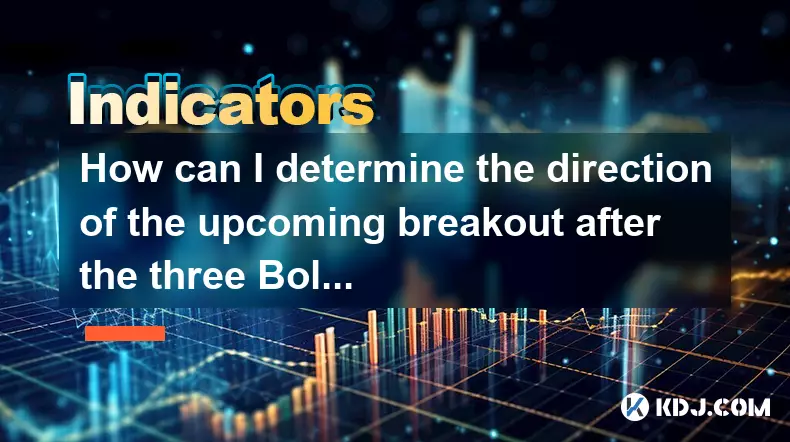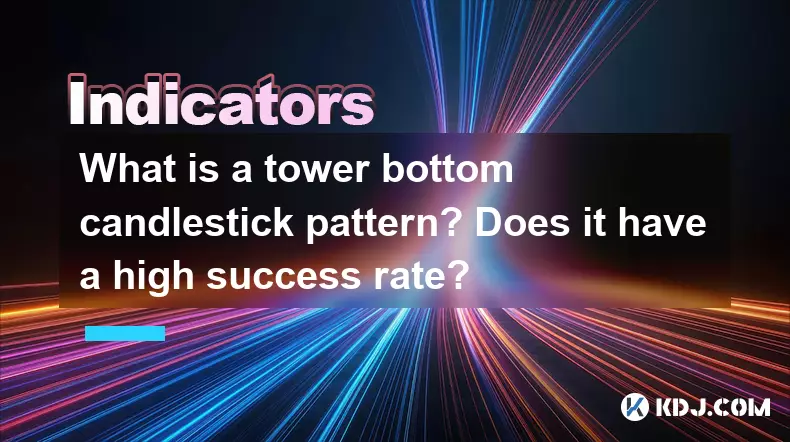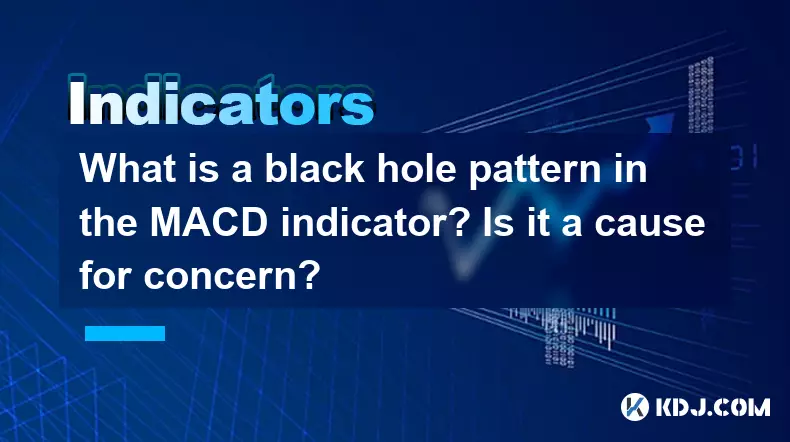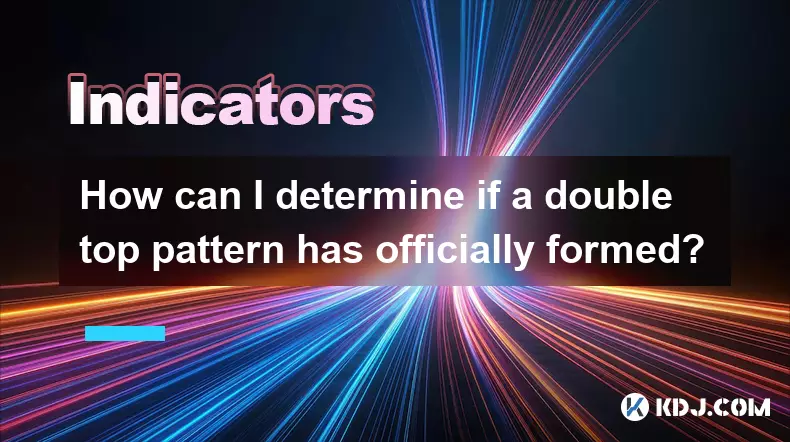-
 bitcoin
bitcoin $109667.069529 USD
-3.03% -
 ethereum
ethereum $3936.685804 USD
-4.07% -
 tether
tether $1.000493 USD
0.01% -
 xrp
xrp $2.771823 USD
-4.74% -
 bnb
bnb $957.805027 USD
-5.34% -
 solana
solana $196.735100 USD
-6.68% -
 usd-coin
usd-coin $0.999727 USD
-0.01% -
 dogecoin
dogecoin $0.227355 USD
-5.12% -
 tron
tron $0.335205 USD
-0.81% -
 cardano
cardano $0.779256 USD
-3.59% -
 ethena-usde
ethena-usde $0.999900 USD
-0.06% -
 hyperliquid
hyperliquid $42.492095 USD
-6.61% -
 chainlink
chainlink $20.501853 USD
-4.34% -
 avalanche
avalanche $28.952606 USD
-11.21% -
 stellar
stellar $0.356038 USD
-3.93%
How can I determine the direction of the upcoming breakout after the three Bollinger Bands narrow?
A Bollinger Band squeeze in crypto signals low volatility and potential for a sharp move; traders should watch volume, candlestick patterns, and on-chain data for breakout confirmation.
Sep 15, 2025 at 07:37 am

Understanding Bollinger Band Squeezes in Crypto Markets
1. The narrowing of the three Bollinger Bands, commonly referred to as a 'squeeze,' indicates a period of low volatility. During this phase, price movements compress between the upper and lower bands, signaling that a significant move could be imminent. In the cryptocurrency market, where volatility is a defining trait, recognizing the end of a squeeze can offer traders a strategic advantage.
2. The central band, typically a 20-period simple moving average, acts as dynamic support or resistance. When the bands tighten around this midline, it reflects indecision among market participants. Traders often interpret this as a coiling effect—potential energy building before a sharp directional move.
3. To determine the breakout direction, one must analyze accompanying volume patterns. A surge in volume during the breakout increases the reliability of the signal. In crypto, volume spikes often precede strong momentum moves, especially on major exchanges where liquidity is high.
4. Monitoring price action at key psychological levels during the squeeze can provide early clues. For example, if Bitcoin consolidates near $60,000 with narrowing bands, a close above this level on high volume may suggest bullish momentum. Conversely, a breakdown below could indicate bearish control.
5. It's essential to avoid relying solely on Bollinger Bands. Combining them with momentum indicators like RSI or MACD helps confirm the direction. Divergences between price and momentum can foreshadow the breakout's character—even if the bands narrow, hidden strength or weakness may already be present.
Key Confirmation Signals for Breakout Direction
1. Candlestick patterns emerging at the edge of the squeeze offer tangible evidence of sentiment. Bullish engulfing or hammer patterns near the lower band suggest buying pressure is stepping in. On the flip side, shooting stars or bearish engulfing candles near the upper band hint at rejection and potential downside.
2. Order book depth on centralized exchanges can reveal hidden demand or supply. A cluster of large buy orders just below the current price may prevent a breakdown, while stacked sell walls above can cap upward movement. This microstructure analysis complements the technical squeeze.
3. The first strong close outside the Bollinger Bands carries significant weight. A daily candle closing above the upper band with expanding volume often confirms a bullish breakout. Similarly, a decisive close below the lower band supports a bearish interpretation.
4. Correlation with broader market trends should not be ignored. If Ethereum and major altcoins are showing similar squeeze patterns and break upward, Bitcoin’s breakout is more likely to align. Market-wide momentum tends to synchronize during high-impact events like halvings or regulatory news.
5. Timeframe alignment strengthens the signal. A squeeze resolving on the 4-hour chart that matches a breakout on the daily chart increases conviction. Traders often use multiple timeframes to filter out false signals common in the noisy crypto environment.
Behavioral Patterns During Low-Volatility Phases
1. Market makers and whales often exploit squeeze periods to trigger stop-loss clusters. By pushing price to technical boundaries, they can induce retail liquidations before initiating the real move. This manipulation is more prevalent in low-liquidity altcoins.
2. Sentiment indicators such as fear and greed indexes can reflect complacency during a squeeze. Extreme fear may precede a bullish breakout if oversold conditions align with the band contraction. Conversely, extreme greed during tightening bands may warn of a trap.
3. On-chain metrics add another layer. Declining exchange reserves during a squeeze suggest accumulation, supporting a potential upward breakout. Rising reserves may indicate distribution, increasing the odds of a downward resolution.
4. Funding rates in perpetual futures markets reveal positioning bias. Highly positive funding suggests leveraged longs dominate, making a short squeeze less likely and a downside breakout more dangerous. Negative funding can set the stage for a long squeeze.
5. Social volume and narrative shifts often precede technical breakouts. A surge in discussions around a specific catalyst—like an ETF approval or protocol upgrade—can ignite momentum once the squeeze resolves. Monitoring crypto Twitter and Telegram can provide early sentiment cues.
Frequently Asked Questions
What does a Bollinger Band squeeze look like on a crypto chart?It appears as the upper and lower bands converging toward the middle moving average, creating a narrow channel. Price oscillates in a tight range, often with diminishing candle sizes, indicating reduced volatility before a potential sharp move.
Can a Bollinger Band squeeze lead to a false breakout?Yes, especially in crypto markets where whipsaws are common. A false breakout occurs when price briefly moves outside the bands but quickly reverses, trapping traders who entered based on the initial move. Confirmation through volume and closing prices helps reduce this risk.
How long does a typical squeeze last in Bitcoin?Squeezes can last from a few hours to several days. On the daily chart, a squeeze lasting 5–10 periods is common before a breakout. Shorter timeframes may see quicker resolutions due to higher intraday volatility.
Should I trade every Bollinger Band squeeze?No, not every squeeze results in a meaningful breakout. Many resolve with minimal follow-through. It's crucial to wait for confirmation—such as volume expansion, candlestick patterns, or momentum alignment—before entering a position.
Disclaimer:info@kdj.com
The information provided is not trading advice. kdj.com does not assume any responsibility for any investments made based on the information provided in this article. Cryptocurrencies are highly volatile and it is highly recommended that you invest with caution after thorough research!
If you believe that the content used on this website infringes your copyright, please contact us immediately (info@kdj.com) and we will delete it promptly.
- Bitwise, Hyperliquid ETF, and Perp DEXs: A New Era in Crypto Trading?
- 2025-09-26 12:25:15
- Ozak AI Price Prediction: Analyst Bull Case for $5 by 2026?
- 2025-09-26 12:25:15
- Bitcoin Price Wobbles: Support Failure and Trader Sentiment in the Mix
- 2025-09-26 12:45:16
- Dogecoin, Memecoins, and the Bull Cycle: Are We Still Barking Up the Right Tree?
- 2025-09-26 12:45:16
- Plasma Ignites DeFi: A New Dawn for Stablecoins and TVL?
- 2025-09-26 12:50:01
- Crypto Tax, Senate Showdown, and Trump Relief: What's the Deal?
- 2025-09-26 12:30:01
Related knowledge

What is a tower bottom candlestick pattern? Does it have a high success rate?
Sep 22,2025 at 07:18am
Tower Bottom Candlestick Pattern Explained1. The tower bottom candlestick pattern is a reversal formation that typically appears at the end of a downt...

What is a black hole pattern in the MACD indicator? Is it a cause for concern?
Sep 21,2025 at 06:54pm
Bitcoin's Role in Decentralized Finance1. Bitcoin remains the cornerstone of decentralized finance, serving as a benchmark for value and security acro...

How can I use the psychological line (PSY) to determine market sentiment?
Sep 17,2025 at 02:19pm
Understanding the Psychological Line (PSY) in Cryptocurrency TradingThe Psychological Line, commonly referred to as PSY, is a momentum oscillator used...

How can I determine if a double top pattern has officially formed?
Sep 21,2025 at 03:18am
Understanding the Structure of a Double Top Pattern1. A double top pattern consists of two distinct peaks that reach approximately the same price leve...

What is the Golden Valley pattern on the moving average? Is it better than the Silver Valley pattern?
Sep 21,2025 at 02:54pm
Understanding the Golden Valley Pattern in Moving Averages1. The Golden Valley pattern is a technical formation observed in cryptocurrency price chart...

What does a death cross of the RSI in the strong zone (above 50) mean?
Sep 17,2025 at 10:54pm
Understanding the Death Cross in RSI Context1. The term 'death cross' is traditionally associated with moving averages, where a short-term average cro...

What is a tower bottom candlestick pattern? Does it have a high success rate?
Sep 22,2025 at 07:18am
Tower Bottom Candlestick Pattern Explained1. The tower bottom candlestick pattern is a reversal formation that typically appears at the end of a downt...

What is a black hole pattern in the MACD indicator? Is it a cause for concern?
Sep 21,2025 at 06:54pm
Bitcoin's Role in Decentralized Finance1. Bitcoin remains the cornerstone of decentralized finance, serving as a benchmark for value and security acro...

How can I use the psychological line (PSY) to determine market sentiment?
Sep 17,2025 at 02:19pm
Understanding the Psychological Line (PSY) in Cryptocurrency TradingThe Psychological Line, commonly referred to as PSY, is a momentum oscillator used...

How can I determine if a double top pattern has officially formed?
Sep 21,2025 at 03:18am
Understanding the Structure of a Double Top Pattern1. A double top pattern consists of two distinct peaks that reach approximately the same price leve...

What is the Golden Valley pattern on the moving average? Is it better than the Silver Valley pattern?
Sep 21,2025 at 02:54pm
Understanding the Golden Valley Pattern in Moving Averages1. The Golden Valley pattern is a technical formation observed in cryptocurrency price chart...

What does a death cross of the RSI in the strong zone (above 50) mean?
Sep 17,2025 at 10:54pm
Understanding the Death Cross in RSI Context1. The term 'death cross' is traditionally associated with moving averages, where a short-term average cro...
See all articles










































































